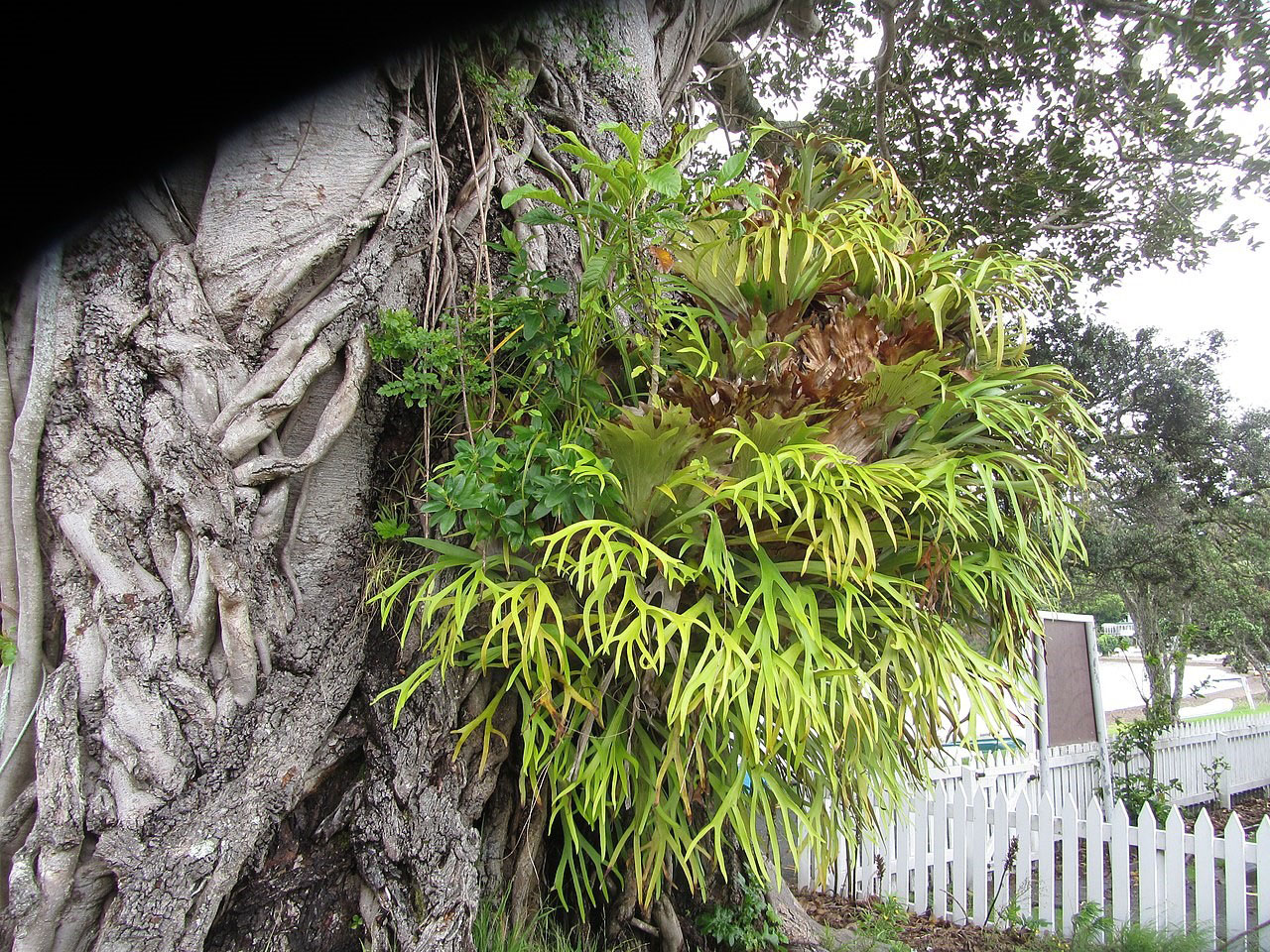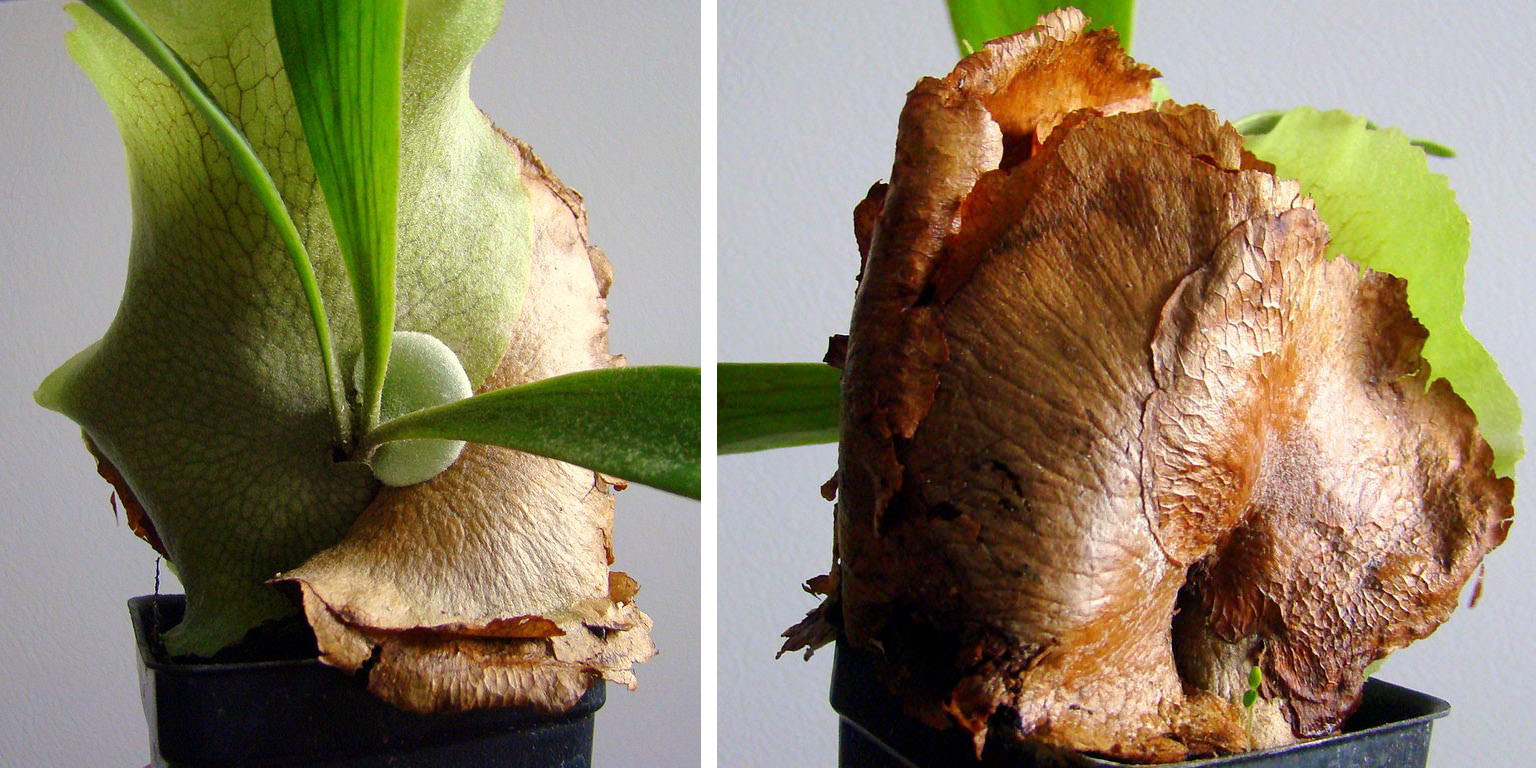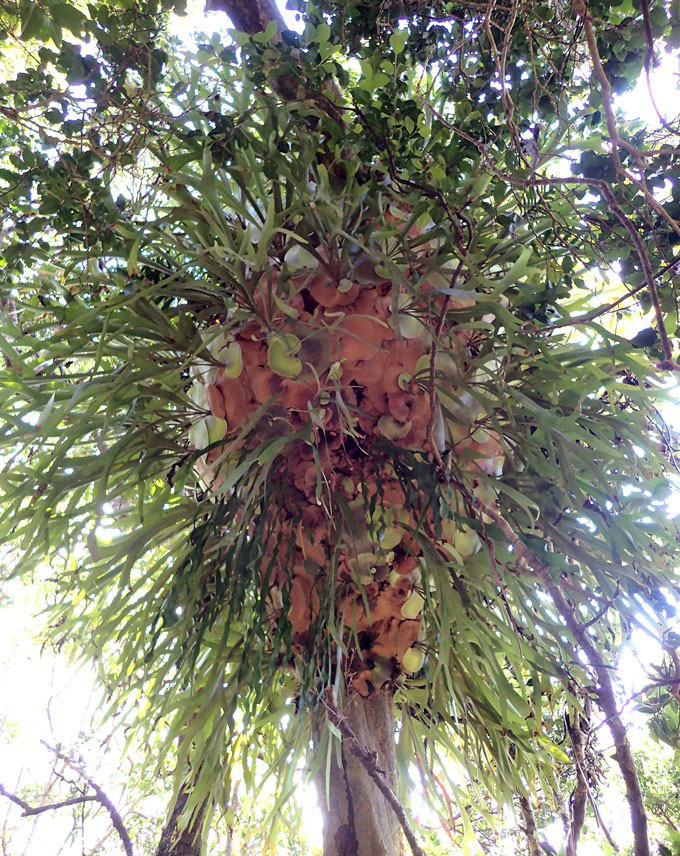
There’s a common houseplant that in the wild can do what no other plant can.
It’s the staghorn fern.
It’s an epiphyte, meaning it doesn’t need soil but instead grows on a larger host plant and draws its nutrients from water and air.
But that’s not what makes it unique.
Normally a staghorn has two types of fronds. One is green, antler shaped and produces spores. The other is brown, strap-like and sterile, and attaches the fern to the host.
But a scientist noticed that wild staghorns in Australia grew in colonies in which genetically identical plants took different forms.
The ferns at the bottom of the colony had only brown, sterile fronds. At the top, the ferns were only green and fertile.
The brown ferns supported the green ferns. The green ones funneled water down to the brown. And a network of roots connected them together.
It became apparent that this was a social colony of cooperative individuals, like a beehive or an ant mound.
Scientists are trying to figure out if the plants at the bottom are older and have just grown naturally sterile while new green plants keep growing on top of the last generation.
Or if there’s some kind of chemical signal between the plants that makes them behave differently.
Either way, no other plant has shown this kind of communal behavior— a truly unique evolution for ferns.
Background
Synopsis: Ferns have been around for almost 400 million years, and they continue to evolve. In Australia, certain staghorn ferns that grow in colonies attached to trees have exhibited a behavior undocumented in the plant kingdom. Recent research shows that various individuals in these fern colonies take on different roles, with up to 40% giving up the ability to reproduce in order to funnel water and nutrients toward fertile individuals to improve the health and longevity of the colony as a whole. It takes a village…of ferns!
- We talked about ferns through 390 million years of Earth history in the previous episode, ED279-Fantastic Ferns.
- Some ferns are still continuing to evolve in ways that are surprising.
- Recently, a curious scientist noted that a variety of epiphytes on Australia’s Lord Howe Island, which you may recognize as the popular house plant known as staghorn ferns (Platycerium bifurcatum), always occurred in groups, so he decided to investigate.
- Staghorn ferns and their Platycerium relatives have two types of fronds. One frond type is green, strap-like, antler shaped and fertile, while the other is brown and sterile and serves to attach individual ferns to host trees while forming a nest that protects its rhizome and roots from dehydration.

- Researchers studied ten colonies of staghorn ferns on arid Lord Howe Island, isolated in the middle of the Tasman Sea.
- They found that 40% of the individuals consisted entirely of sterile brown nest fronds that cluster at the base of the colony.
- These basal nest frond plants structurally support the remaining individuals in the colony with a higher proportion of fertile green fronds.
- The waxy green strap fronds at the top of the colony funnel water and debris into the cluster of nest fronds that soak it up.
- Networks of roots connect the fertile fronds at the top of the colony to the water and nutrients trapped within the sterile fronds at the base.
- Genetically identical individuals performing different roles made up 80% of the colonies contained, with the sterile individuals supporting their fertile twins higher up on the host tree.
- Researchers are looking into whether the individual ferns go through a succession of roles through their life cycle as the colony grows upward.

- When bees, ants, termites, or mole rats separate labor roles from reproductive roles in order to live from a communal store of resources, scientists call the behavior eusocial. But eusocial behavior has always been thought to be a trait of the animal kingdom.
- Can plants coordinate to benefit a collective colony?
- Do older plants move into a supporting role later in their life?
- Has the fern colony evolved from many individuals into a single interconnected individual?
- Scientists hypothesize that stressful situations, such as those that epiphyte ferns experience in arid environment treetops far from soil, may provide extraordinary incentives for adaptation. With nearly 400 million years of adaptation history, ferns have adapted yet again.

